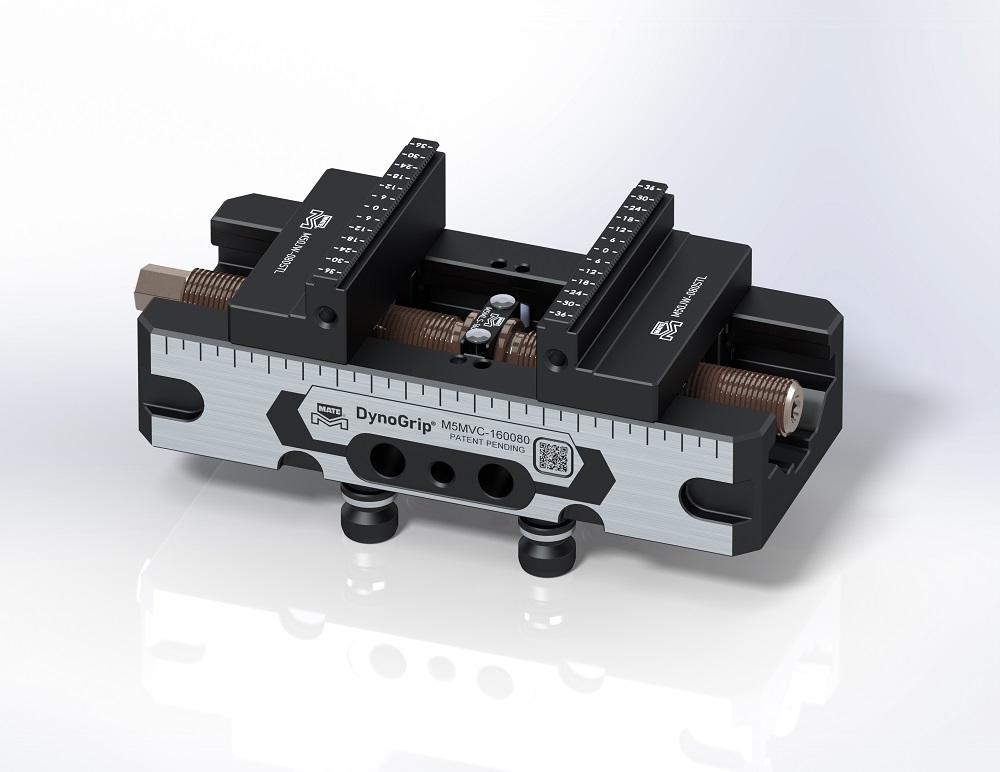Machinists obviously demand accuracy and repeatability, but according to Mate,these demands also extend to the vice that holds the workpiece. For this reason, Mate workholding functions as a system. A highly accurate and repeatable base needs a highly accurate and repeatable self-centring vice for the system to provide best-in-class operation. Here, Mate reports that its DynoGrip vices shorten set-up time and reduce process variability.
DynoGrip self-centring vices clamp parts to within 15 µm of perfect centre, repeatable to within 10 µm. These results are due in part to Mate manufacturing the lead screw in-house, using tool steel that is properly hardened and coated with titanium carbo-nitride. The screw has a fine 1.5 mm pitch and a trapezoidal thread yielding a strong, steady push.
Perhaps the most important feature is that Mate machines both the right and left sides of the lead screw from the same top dead centre. This process is how the company controls where the lead screw starts and stops. Mate does the same for the internal thread of the pusher to know the top dead centre. Since the company controls every element of the manufacturing process, it eliminates variability and makes it easy to get to the vice to centre accurately and in a repeatable manner.
DynoGrip self-centring vices also have an anti-lift design to counteract natural physicsthat will cause a part to rise up. The pushers and jaws work together to exert a downward force on the workpiece equal to the clamping force. Furthermore, the quick-change jaws feature a serrated tooth geometry which generates a downward force on the workpiece and a deliver superior ‘bite’ into the workpiece.
For further information www.mate.com














